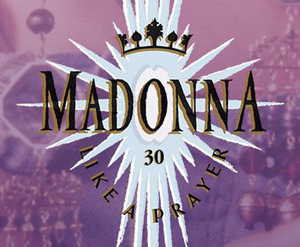 If released in 2019, Madonna‘s “Like A Prayer” video would have ignited a different controversy than the one it stirred up in 1989. Throughout the clip, broadcast in advance of the album of the same name, the singer dances in a field of burning crosses, the instantly and viscerally recognizable motif of the Ku Klux Klan. It’s not exactly her symbol to appropriate. A generous reading of the video suggests she is deploying the inflammatory image toward a commentary on racism in the United States. In the video’s narrative, a black man is arrested by white cops for a crime he did not commit. It’s the same old story: He witnessed a gang of white men assault a white woman, ran over to help her, found himself the one in handcuffs. The stories nursed by white supremacy insist he must be responsible for the violence, so into the can he goes. And then there’s Madonna, dancing in front of the KKK’s crosses, hinting at a link between the racists in uniform and those cowering under white hoods. She presages Rage Against The Machine’s 1992 refrain: “Some of those who work forces / Are the same who burn crosses.”
If released in 2019, Madonna‘s “Like A Prayer” video would have ignited a different controversy than the one it stirred up in 1989. Throughout the clip, broadcast in advance of the album of the same name, the singer dances in a field of burning crosses, the instantly and viscerally recognizable motif of the Ku Klux Klan. It’s not exactly her symbol to appropriate. A generous reading of the video suggests she is deploying the inflammatory image toward a commentary on racism in the United States. In the video’s narrative, a black man is arrested by white cops for a crime he did not commit. It’s the same old story: He witnessed a gang of white men assault a white woman, ran over to help her, found himself the one in handcuffs. The stories nursed by white supremacy insist he must be responsible for the violence, so into the can he goes. And then there’s Madonna, dancing in front of the KKK’s crosses, hinting at a link between the racists in uniform and those cowering under white hoods. She presages Rage Against The Machine’s 1992 refrain: “Some of those who work forces / Are the same who burn crosses.”
Thirty years ago, Madonna came under fire not for flashing the burning cross and not even for suggesting that the police are racists but for being horny for God. Before you see the video’s instigating event — the assault, the arrest — you see Madonna rushing into a church, distraught. She finds a wax saint in a cage. He weeps and comes to life, and she falls for him, taking him into her arms until he becomes a real boy. By today’s metrics, it’s a benign enough image, but in 1989 it was enough to send the American Family Association into a tizzy. Madonna had an advertising deal with Pepsi, and the AFA, along with other right-wing Christian groups, furiously called for Pepsi boycotts. Reagan had just left office, succeeded by Reagan-lite (George H.W. Bush). Pop stars couldn’t simply f*ck saints without repercussions.
Read full article at UPPROX


